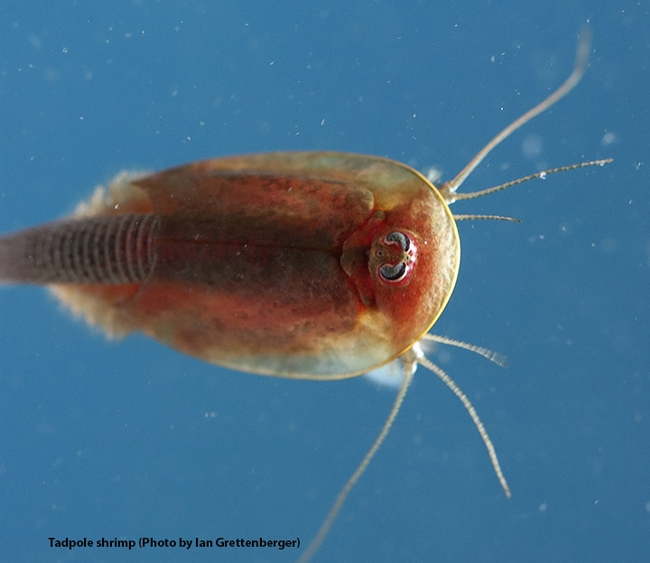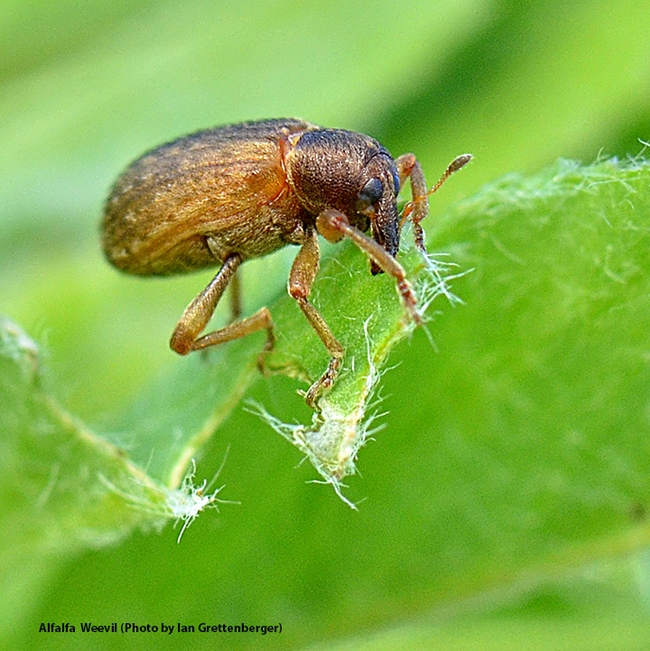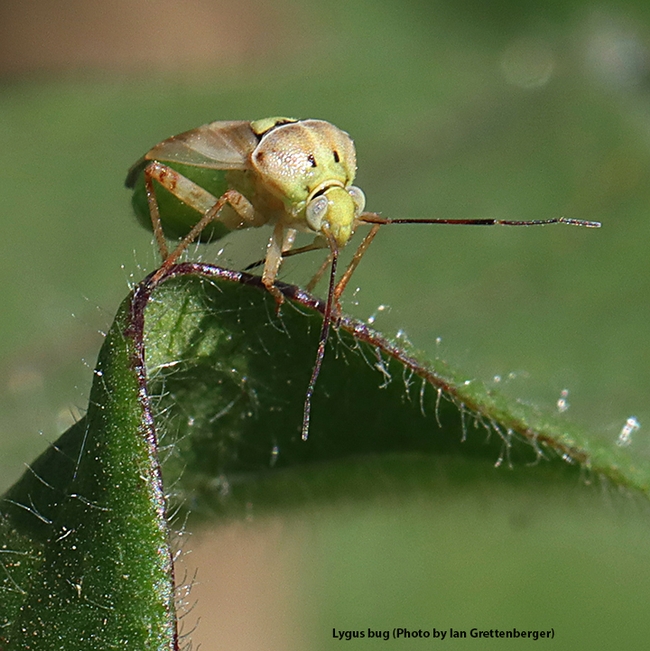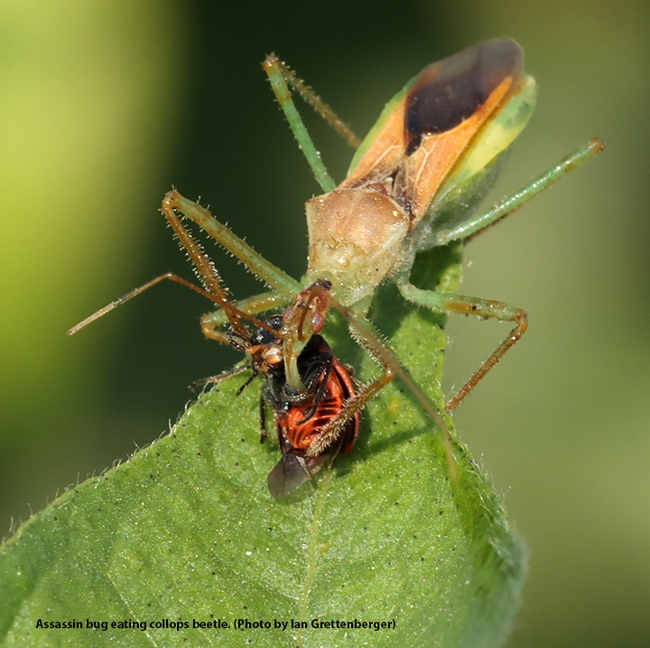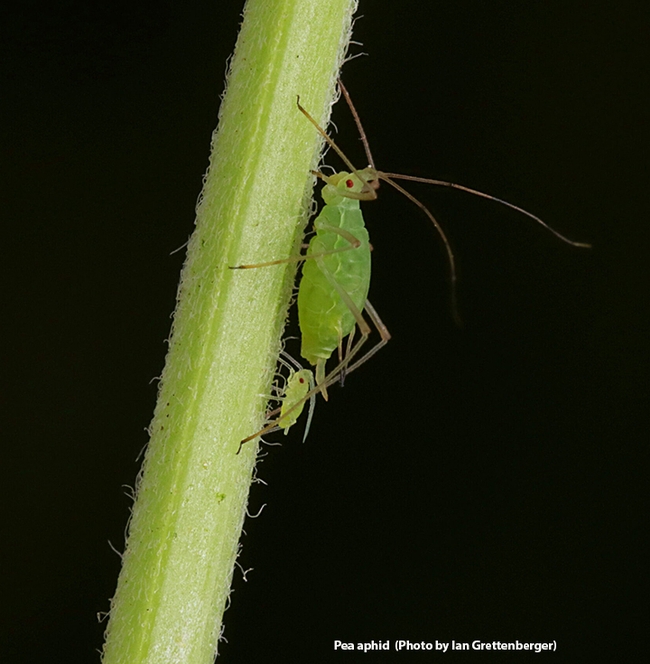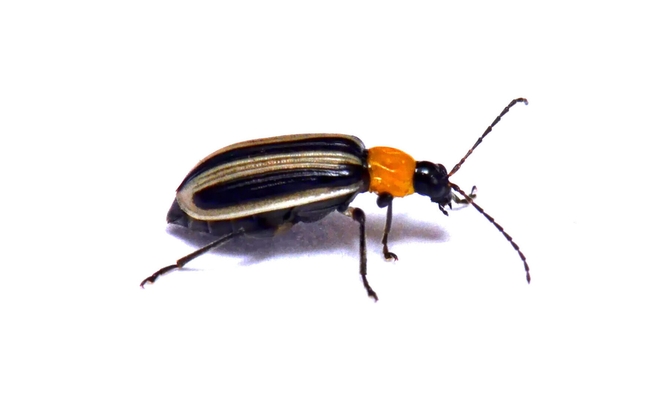- Author: Kathy Keatley Garvey
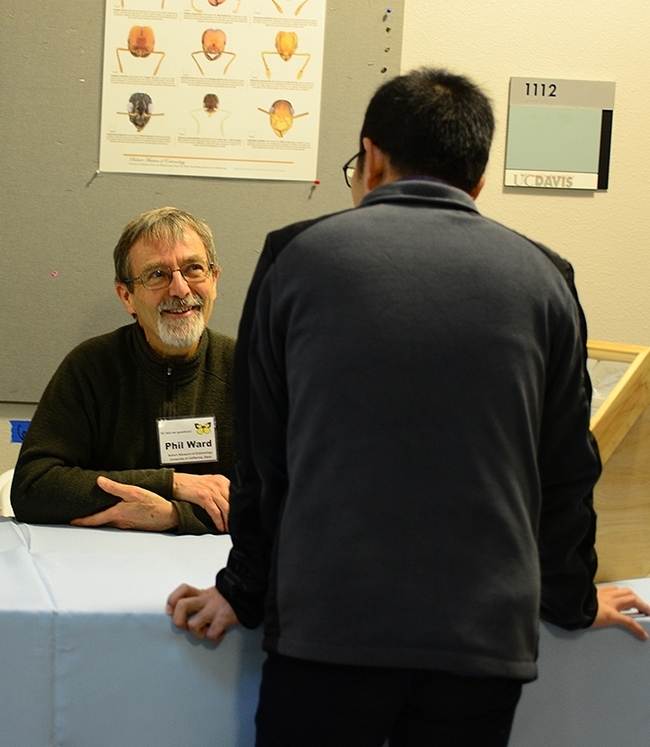
The laboratory of Professor Phil Ward, UC Davis Department of Entomology and Nematology, will provide live ants, specimens, information, and engage in one-on-one discussions about ant species at the Bohart Museum of Entomology open house from 1 to 4 p.m., Sunday, May 21.
The event, free and family friendly, will take place in Room 1124 of the Academic Surge Building, 455 Crocker Lane. The family arts-and-crafts activity will be to create paper ant headbands. "The current version has serrated mandibles, but people can go free form, too," said Tabatha Yang, education and outreach coordinator. "We're hoping for a colony of visitors with red headbands."
Among the Ward lab scientists scheduled to participate are doctoral candidates Jill Oberski and Zach Griebenow (both are expected to receive their PhDs this year), and third-year doctoral student Ziv Lieberman.
Griebenow and Oberski are veterans of UC Davis teams that won national championships in the Entomological Society of America's Entomology Games or "Bug Bowls." (See news story) UC Davis teams won national championships in 2022, 2018, 2016 and 2015.
The Bohart Museum featured Ward, a noted ant systematist, in a video, "All About Ants II" shown at the 2021 UC Davis Biodiversity Museum Day. It is posted on YouTube at https://youtu.be/d8eRNsD8dxo.
Ward offered an hour-long, introductory presentation on ants and answered scores of questions, drawing viewers from as far away as Virginia. He illustrated his talk with ant images taken by his former doctoral student Alex Wild (PhD from UC Davis in 2005), curator of entomology at the University of Texas, Austin, and a noted macro photographer (http://www.alexanderwild.com).
Ants originated about 120 million years ago (early Cretaceous), evolving from "wasp-like creatures," Ward said. They are members of the order Hymenoptera, and their closest relatives include honey bees, cockroach wasp and the mud daubers.
Ward related that live in long-lived colonies with (1) cooperative brood care (2) overlapping generations and (3) reproductive division of labor, the hall marks of eusocial behavior. He also pointed out:
- A typical ant colony contains a reproductive queen, numerous non-reproductive workers and brood (eggs, larvae, pupae)
- Colonies of ants can be thought of as superorganisms: tightly integrated and cooperative entities with complex systems of communication and division of labor (castes)
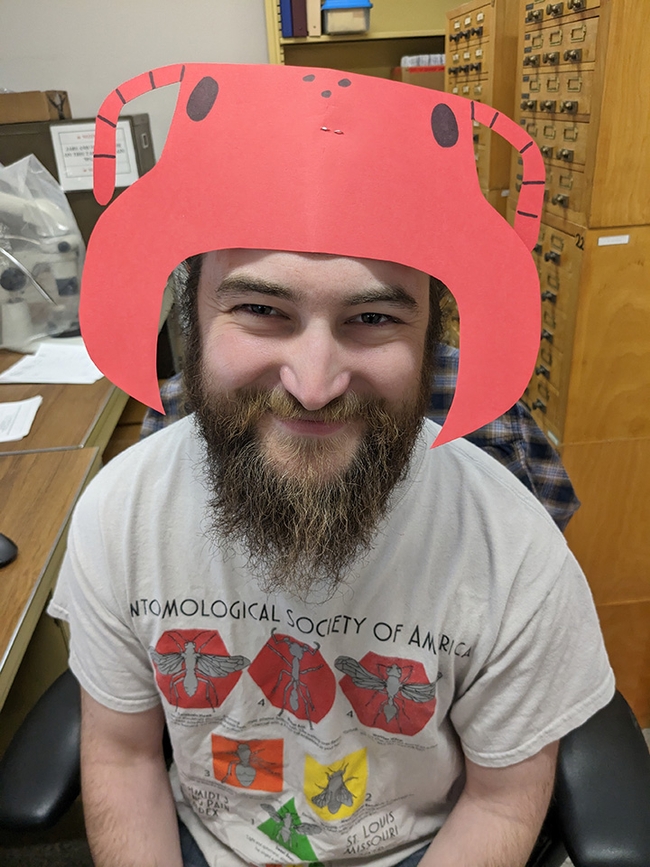
"Ants have occupied almost all of the world's land surfaces, from deserts to rain forests," Ward said in the video. "There's a few places they're absent. They're not in Antarctica, no surprise! They haven't colonized the Arctic and a few very high elevation tropical mountains, but apart from that, almost any place you go on land you'll see our friends, the ants. And they have assumed a quite a diverse array of ecological roles. Some of them are predators, others are scavengers, and some are seed collectors, and these habits vary tremendously among different species in different parts of the world."
Ants communicate largely by chemical (pheromones) and tactile means, Ward said. Their vision is "not particularly acute." He pointed out that that they lay a trail pheromones from the source of food back to the nest. They have alarm pheromones, causing other workers to act defensively. Chemicals also help ants distinguish their nest mates.
Some ants, like the Argentine ants, are pests. These invaders from South America "form super colonies, which means different colonies don't fight each other; they're all cooperating. And the other downside of Argentine ants is that they tend to eliminate native ants. So over the years I've lived in Davis, I have certainly noticed that native ants have declined as the Argentine ants have expanded. And they expand not just in, say, urban areas, but along certain natural habitats and one that they really like is the riparian habitat. So if you look along rivers and streams that are near urban areas, they're getting invaded by Argentine ants. And when they do, most native ants just disappear. This is a very tough aggressive ant and the mellow California ants can't handle an aggressive invader from South America. So they just disappear."
The Bohart Museum, directed by UC Davis distinguished professor Lynn Kimsey, houses a global collection of eight million insect specimens, plus a petting zoo (including Madagascar hissing cockroaches, stick insects and tarantulas) and a gift shop, stocked with insect-themed t-shirts, hoodies, jewelry, posters, books, and collecting equipment.
Founded in 1946, the Bohart is open to the public Mondays through Thursdays, from 8 a.m. to noon, and 1 to 5 p.m. More information is available on the Bohart website at https://bohart.ucdavis.edu or by emailing bmuseum@ucdavis.edu.
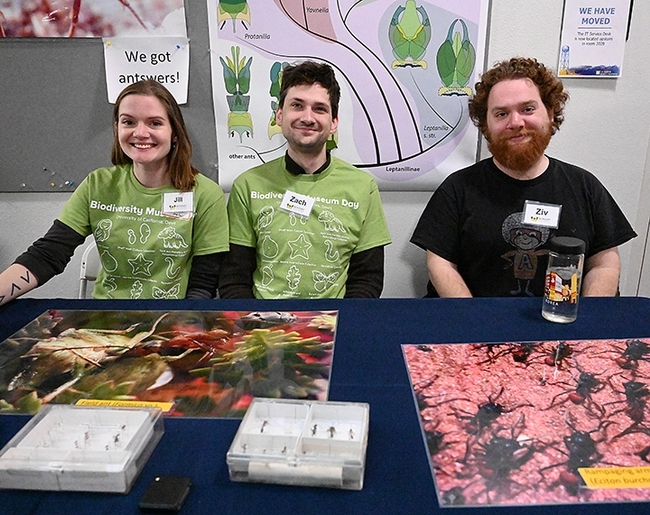
- Author: Kathy Keatley Garvey

Plans are being finalized for the popular "Day of Science."
Scheduled Saturday, Feb. 18, it is billed as a “free, family friendly educational event for the community where visitors get to meet and talk with UC Davis scientists and see amazing objects and organisms from the world around us,” according to Biodiversity Museum Day chair Tabatha Yang, education and outreach coordinator for the Bohart Museum of Entomology.
Eleven museums or collections on campus will showcase their work:
- Anthropology Museum, 328 Young Hall and grounds, noon to 4 p.m.
- Arboretum and Public Garden, Habitat Gardens in the Environmental GATEway, adjacent to the Arboretum Teaching Nursery on Garrod Drive, 9 a.m. to 1 p.m.
- Bohart Museum of Entomology, Room 1124 and main hall of the Academic Surge Building, Crocker Lane, 9 a.m. to noon and 1 to 4 p.m.
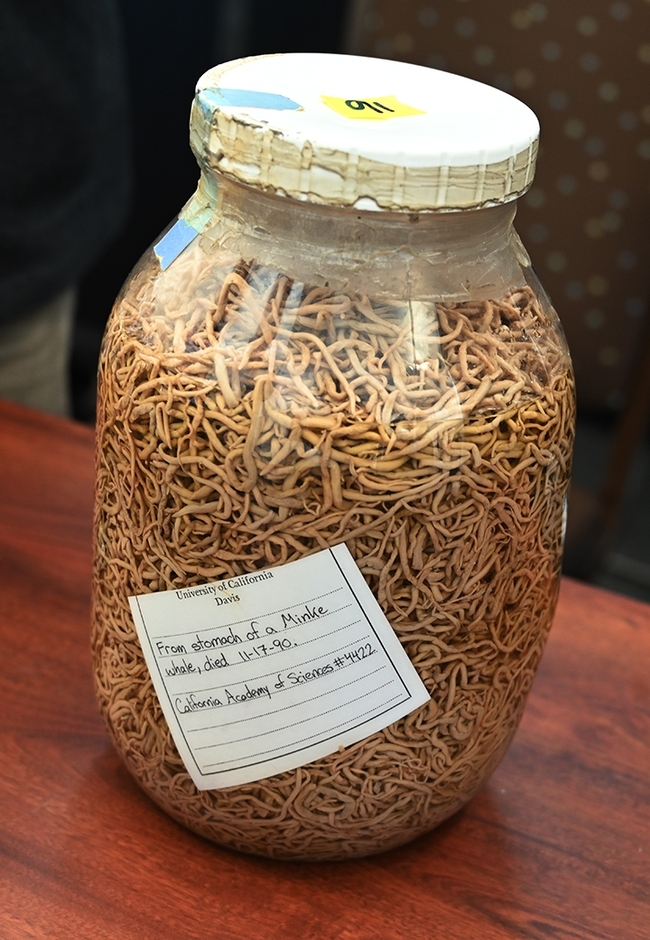 A Minke whale that died in November 1990 was infected with ascaridoid nematodes (shown).
A Minke whale that died in November 1990 was infected with ascaridoid nematodes (shown). - Botanical Conservatory, the greenhouses along Kleiber Hall Drive, 11 a.m. to 3 p.m.
- California Raptor Center, 1340 Equine Lane, off Old Davis Road, 9 a.m. to 3 p.m.
- Center for Plant Diversity, Sciences Laboratory Building/Esau Science Hall, off Kleiber Hall Drive, 11 a.m. to 3 p.m.
- Nematode Collection, Sciences Laboratory Building/Esau Science Hall, off Kleiber Hall Drive, 9 am. to 3 p.m.
- Marine Invertebrate Collection, Sciences Laboratory Building/Esau Science Hall, off Kleiber Hall Drive, 9 am. to 3 p.m.
- Museum of Wildlife and Fish Biology, Room 1394, Academic Surge Building, 455 Crocker Lane, 10 a.m. to 2 p.m.
- Paleontology Collection, (Department of Earth and Planetary Sciences) 434 LaRue Road, 12 noon to 4 p.m.
- Phaff Yeast Culture Collection, Robert Mondavi Institute Brewery and Food Processing facility, Old Davis Road, 10 a.m. to 2 p.m. (See news story)
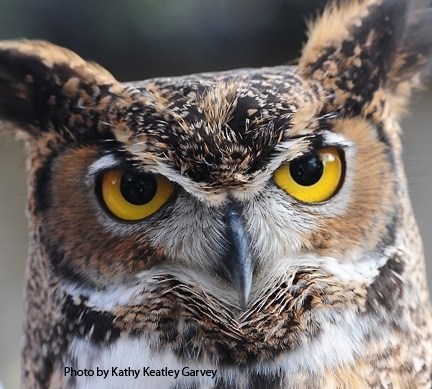
The UC Davis Biodiversity Museum Day is traditionally held on Presidents' Day Weekend at various venues on campus. The 2022 event, however, took place March 6 in the UC Davis Conference Center and drew some 1000 visitors. This year, it's back home to the individual departments where scientists will be on hand to greet visitors and answer questions.
Many middle school and high school students attend the event to take the opportunity to consider careers in science.
All participating museums and collections have active education and outreach programs, Yang said, but the collections are not always accessible to the public.
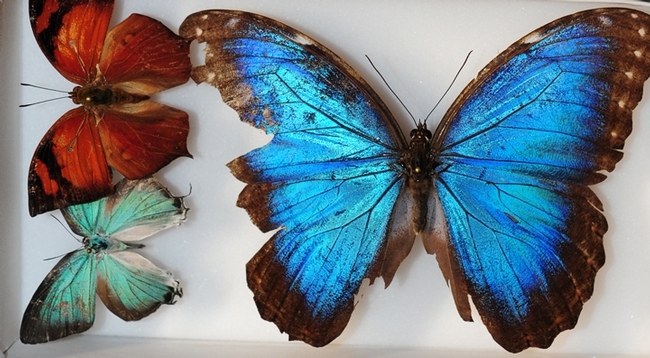
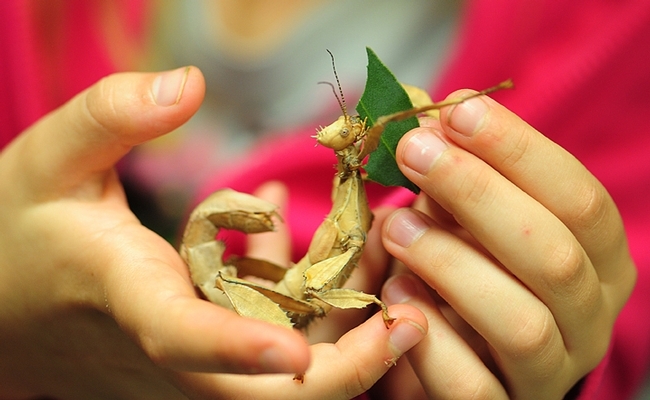
- Author: Kathy Keatley Garvey
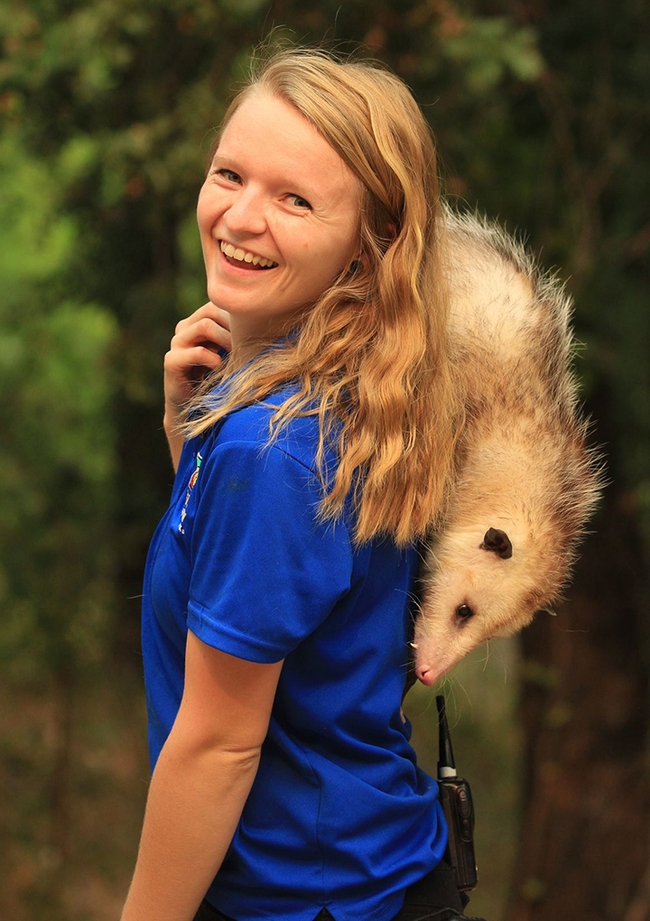
"We have some fabulous beetle people from taxonomists to ecologists to highlight our great beetle collection," said Tabatha Yang, education and outreach coordinator of the Bohart Museum. "It should be a lot of fun and we look forward to people stopping by and appreciating such a diverse group."
Jonelle Mason, a UC Agriculture and Natural Resources (UC ANR) employee and coordinator of Project Learning Tree (PLT) California, an initiative of the Sustainable Forestry Initiative (partnered with the California Department of Forestry and Fire Protection-Urban and Community Forestry Program), will be tabling children's activities in the hallway of the Academic Surge Building. They will include a hands-on peppermint beetle activity.
"We specifically have an activity focused for K-5 called peppermint beetle!" Mason related. "It models how animals use a sense of smell to respond to the environment around them and identifying smells in our daily lives. This is a super fun activity to present and then bring back to kids! It specifically will focus on bark beetles."
Mason, a master herpetologist and a former zookeeper with a bachelor's degree in biology, worked with exotic animals for 12 years before joining the PLT team to continue "my fierce love for nature and environmental education." As a zookeeper, she worked "with some of the largest animals on the planet" and "used animal training to influence thousands of people throughout the country."
PLT "uses trees and forests as windows on the world to increase students' understanding of the environment and actions they can take to conserve it," according to its website. "Since 1976, PLT has reached 145 million students and trained 765,000 educators to help students learn how to think, not what to think about complex environmental issues...PLT "helps develop students' awareness, knowledge, and appreciation of the environment, builds their skills and ability to make informed decisions, and encourages them to take personal responsibility for sustaining the environment and our quality of life that depends on it. From its beginnings in 1976, PLT has exemplified high-quality environmental education."
Cal Fire
Curtis Ewing, a senior environmental scientist with Cal Fire's Forest Entomology and Pathology, will show specimens of "many different invasive and native species that do or could impact forest health in California." They include such specimens as Ips engravers, Western pine beetles, flat-headed borers and various long-horned beetles. Among others on the list: coconut rhinoceros beetles, South American palm weevils, Asian longhorned beetles, emerald ash borers, gold spotted oak borers, Eucalyptus borers, invasive shot hole borers and Mediterranean oak borers.
"I will have a table with displays and a USB microscope hooked up to a screen and specimens," Ewing said, "so people can put different, small, species under the scope."
What should people know about bark beetles and the damage they cause?
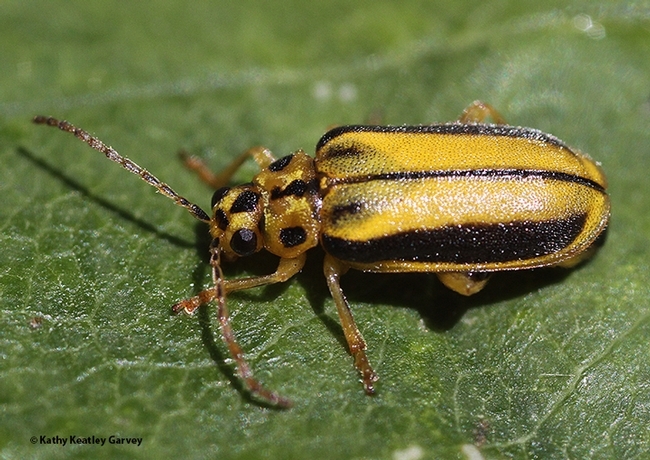
"Forest pests (insects and diseases) annually destroy 10 times the volume of timber lost due to forest fires," according to the Cal Fire Forest Entomology and Pathology website. "Native bark beetles took hold in Southern California forests following severe drought years and caused unprecedented tree mortality. The introduced Pitch Canker Disease has attacked Monterey pine along the central coast. Sudden Oak Death, caused by Phytophthora ramorum, has been found in 14 counties in California and has killed thousands of oaks. Cal Fire's forest pest specialists help protect the state's forest resources from native and introduced pests, conduct surveys and provide technical assistance to private forest landowners, and promote forest health on all forest lands."
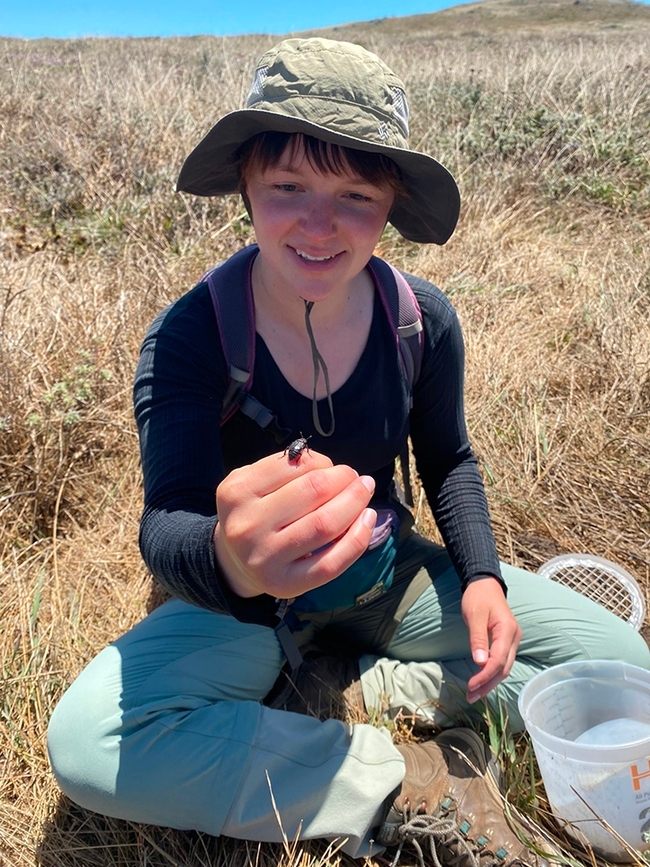
Burying Beetles
Tracie Hayes, a doctoral candidate and burying beetle researcher in the laboratory of Professor Louie Yang, UC Davis Department of Entomology and Nematology, will discuss her work and present a video she created, "A Clearance of Death on Behalf of Life" at https://youtu.be/cGLOE7SrbiU. She will field questions about the insect and her research. (See news story)
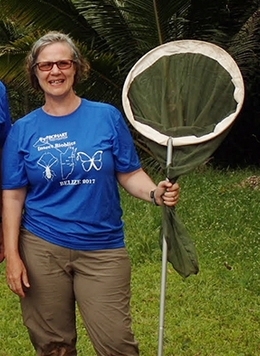
Folsom Lake College professor Fran Keller, a Bohart Museum scientist and a UC Davis doctoral alumna of entomology, will discuss the beetles she and other scientists collected in Belize.
"In November I started working in the Natural History Museum London Coleoptera collection, working on Belize Cerambycidae to facilitate identification and then catalog specimens for the Belize National Insect Collection," Keller said. "I worked with Larry Bezark, via the internet/email/Google Drive, who is retired from the California Department of Food and Agriculture. There were 28 new country records for Belize and two new species to science that Larry will describe."
"We don't have an exact number but I would say we have over 500 beetle species identified, but there are many more that need identification." (See more information)
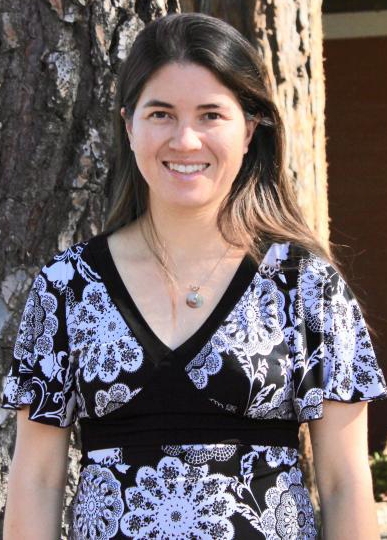
UC Davis graduate student Jennifer Cribbs of the Graduate Program of Environmental Policy and Management, will display tree cores and boring tools. She focuses on restoration, botany and forest dynamics. Cribbs holds a bachelor's degree in psychology from Stanford University. Following her graduation, she worked for the National Park Service, the U.S. Forest Service, and the U.S. Geological Survey where her job duties ranged from tagging endangered sea turtles at Padre Island National Seashore to leading a field crew focused on assessing the health of white pines in Sequoia and Kings Canyon National Park.
Arts and Crafts
The family arts-and-craft activity will be to color a drawing of a carrion beetle, the work of Tracie Hayes.
The Bohart Museum, directed by UC Davis distinguished professor Lynn Kimsey and dedicated to "understanding, documenting and communicating terrestrial arthropod diversity," was founded in 1946 and named for UC Davis professor and noted entomologist Richard Bohart. In addition to its global collection of eight million insect specimens, it houses a live "petting zoo," featuring Madagascar hissing cockroaches, walking sticks and tarantulas; and a year-around gift shop, stocked with insect-themed books, posters, jewelry, t-shirts, hoodies and more.
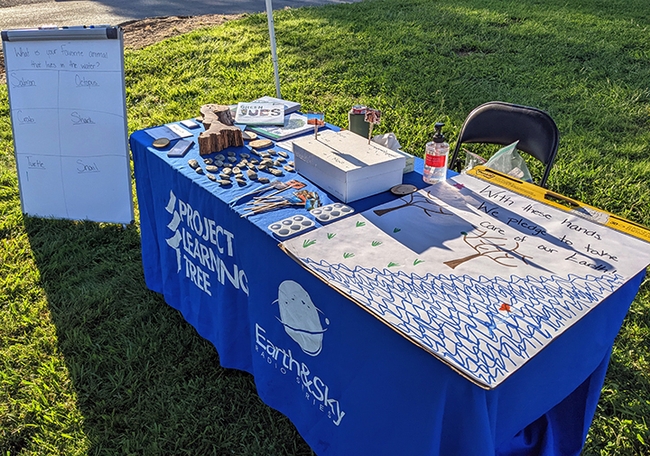
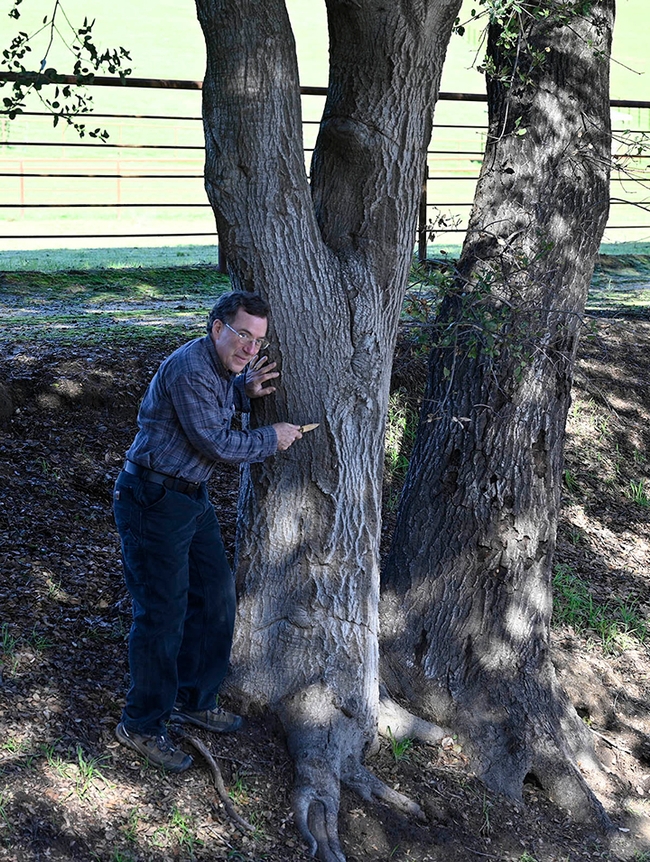
- Author: Kathy Keatley Garvey
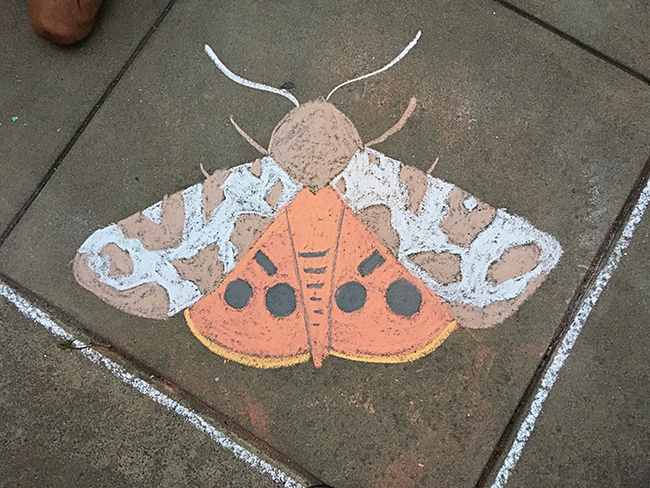
It was like a moth to a flame--or 400 moths to a flame--when a record crowd surged into the Bohart Museum of Entomology Moth Night for its July 30th open house.
After a two-year hiatus due to the COVID pandemic, "how great it was to have the doors open again for the public," said entomologist Jeff Smith, curator of the lepidoptera collection.
The 400-member crowd, thought to be the largest crowd at the Bohart, other than at UC Davis Picnic Day, was there to learn more about moths, draw images of moths on the sidewalks, enjoy an evening of camaraderie, and head outside to watch moths and other insects fly onto the hanging white sheet, part of the blacklighting demonstration display.
“People could draw whatever they wanted on chalk (outside the Academic Surge Building), but there were a lot of moths, although my kids went rogue and drew a soccer field and a figure,” said Tabatha Yang, the Bohart Museum education and outreach coordinator.
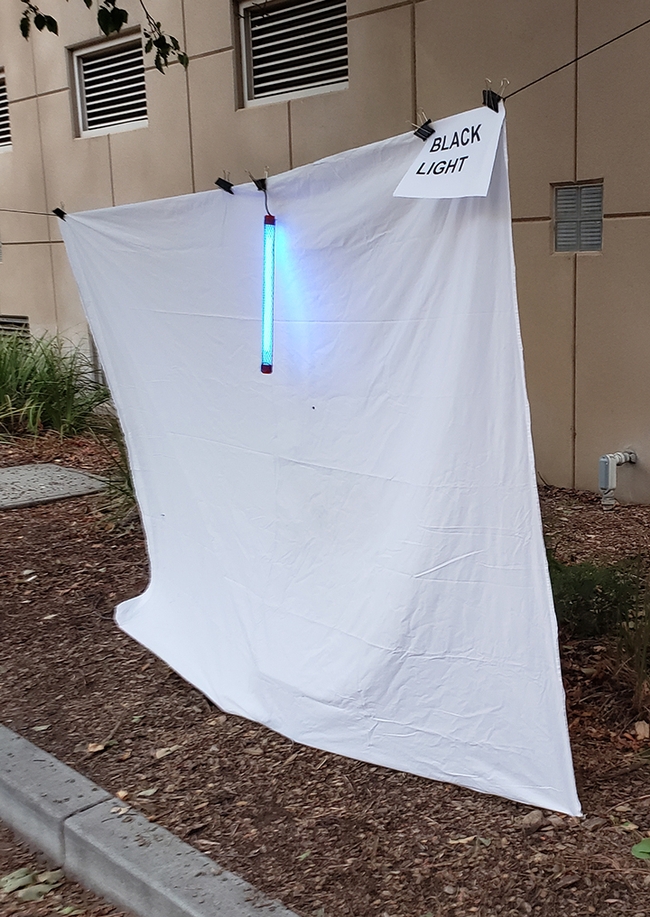
“We ran out of hot water, for the hot cocoa packets, and cookies half-way through!" Yand said, quipping "I thought we would be eating left over chocolate chip cookies at the Bohart all week, but alas that is not the case.”
The blacklighting display (white hanging sheet, ultraviolet light, and a generator) served as a demonstration site. "We had a few small beetles and a few small moths come in," Yang said.
The open house, which drew visitors from as far away as Alameda, took place the weekend before UC Davis summer sessions, so “the popularity among the college set was perhaps because of that, she said. "People were free from studying their required courses and so, on their own, they decided to seek out and learn about moths!”
Kareofelas fielded scores of questions about the Polyphemus moth, Antheraea polyphemus. “They are currently making their appearance in Davis, so a number of folks have seen them and had photos on their phones," he said. "A number of folks came with the desire to see a specific moth, and if we were lucky, it was located in the aisle we had open. Jeff (Smith) had pulled the drawers, from other aisles, with a number of specific species and had them labeled--a lot of questions about these drawers.”
"Some wanted to see the hummingbird moth, so I got to show Hyles lineata to a number of folks," Kareofelas said. "We had a lot of just plain 'good ol' interest' in seeing something and learning something about moths. The night started with a bang and went right to 11:00, still busy!"
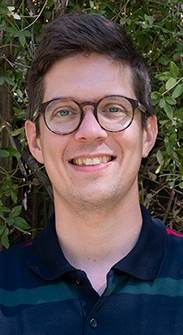
"I was surprised at how popular the event was, how busy the store was, and how many folks showed up," Kareofelas said. "It was a great night!"
Smith spent the entire open house demonstrating how to spread the wings of moths. “I couldn't believe how many people came, and I was never ABLE to leave the table where I was demonstrating spreading," Smith said. "There was a constant group of people watching and asking questions, such as 'How did you become interested in this?' and of course, lots of questions on the spreading materials and techniques."
“The moment the door officially opened at 8 p.m., groups came in and headed in all different directions," Smith said. "One couple from Dixon was there with a group of scouts and they must have hung around my demo for 45 minutes with all kinds of interest and questions. People showed me photos on their cell phones of the white-lined sphinx moth, the ceanothus silk moth, and even a buck moth (Hemileuca) from Mono Basin."
Smith said he allowed "at least 10 different young people try their own hand at spreading a moth or two and that was really well received. I had a ziplock bag of surplus, papered moths and let some of the people take some for themselves. When it finally slowed a bit, I finally got up and couldn't believe it was already past 11 p.m." He headed over to the moth aisle where Kareofelas was still showing and answering questions about moths. "Greg did an amazing job. And, I ended up talking to a couple who work on campus until nearly 11:30."
Outside, the crowd marveled at the chalk drawings, including the tiger moths created by Srdan Tunic of UC Davis, a second-year master's degree student in art history. Skilled in street art and in academics (his Linked In profile indicates "Curating: creating bridges between art and people, ideas and objects"), Tunic is the co-founder, researcher and guide of Street Art Walks Belgrade, where he conducts lectures and tours on street art, graffiti, and the history of Belgrade. He holds a bachelor of arts degree (2008) in art history from the University of Belgrade, Serbia, and a master of arts in cultural policy and management (2017) from the University of Arts, Belgrade. He expects to receive his master's degree in art history from UC Davis in May of 2023.
The Bohart Museum, located in Room 1124 of the Academic Surge Building, 455 Crocker Lane, UC Davis campus, and directed by UC Davis distinguished professor Lynn Kimsey, houses a global collection of more than eight million insect specimens. It also houses a live "petting zoo" (Madagascar hissing cockroaches, stick insects and tarantulas) and an insect-themed gift shop. The latest t-shirt features a Jerusalem cricket, aka potato bug.
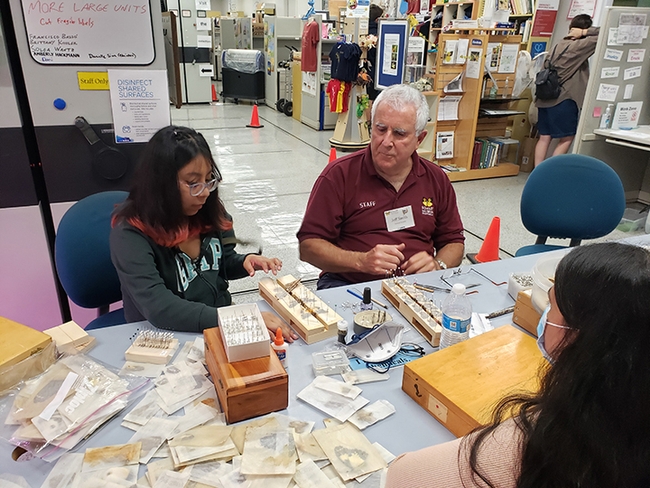
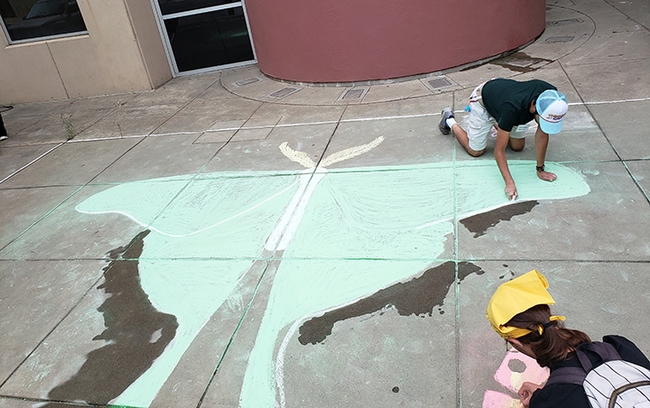
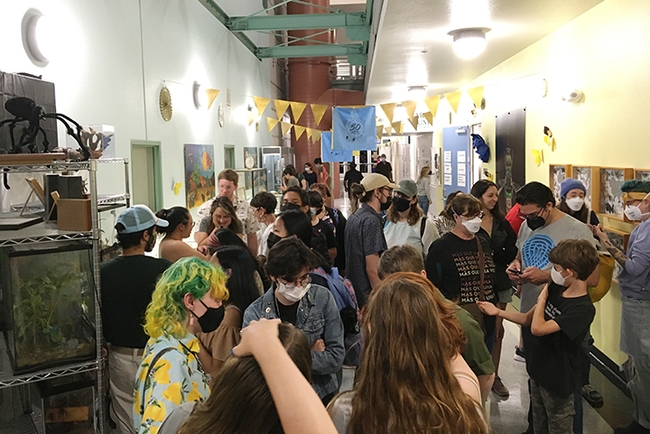
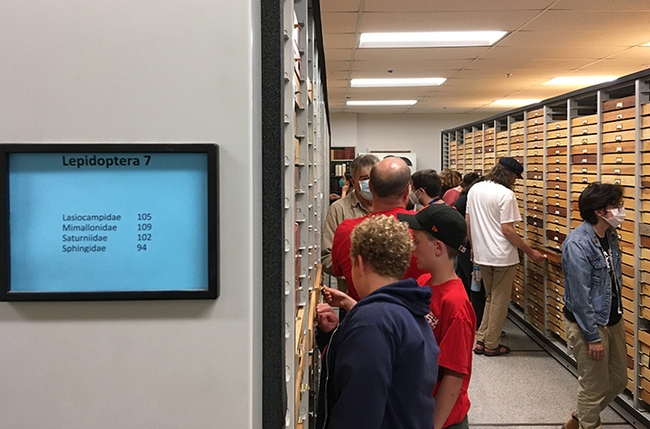
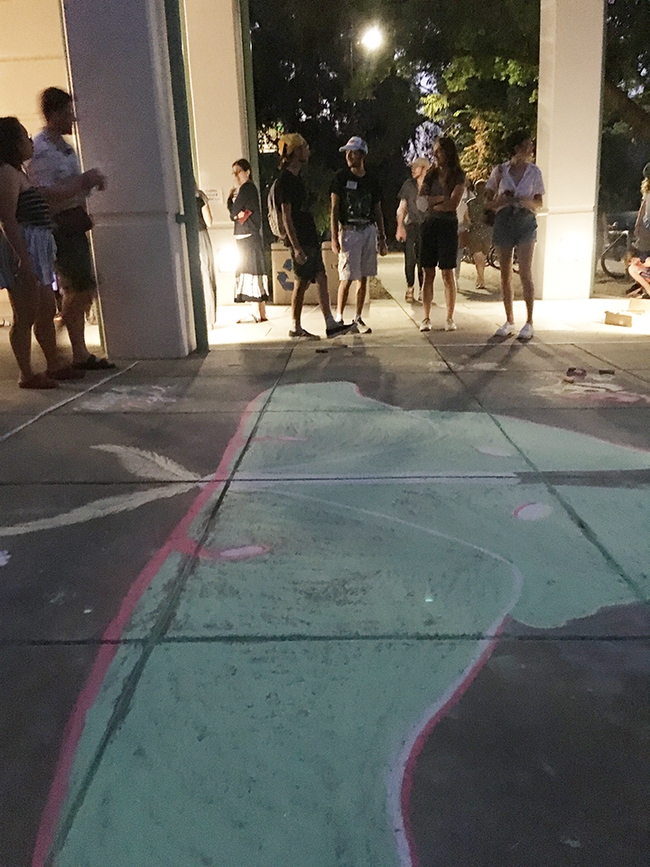
- Author: Kathy Keatley Garvey

The event, titled “Bugs in Ag: What Is Eating Our Crops and What Is Eating Them?” will take place from 1 to 4 p.m. in Room 1124 of the Academic Surge Building on Crocker Lane. It is free and open to the public.
The open house will focus on the expertise of Cooperative Extension specialist Ian Grettenberger of the UC Davis Department of Entomology and Nematology, who researches pests of rice and alfalfa, among other crops. He and postdoctoral fellow Buddhi Achhami of the Grettenberger lab will be displaying tadpole shrimp (crustaceans), alfalfa weevils, aphids and other pests, and will field questions.
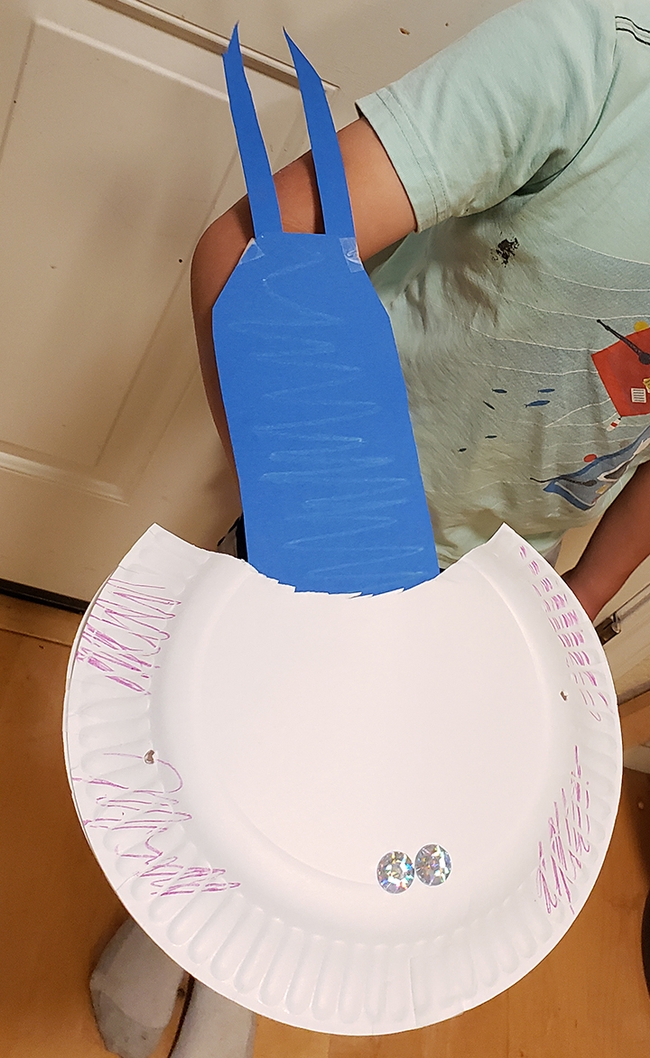
Grettenberger will display newly hatched tadpole shrimp. Guests will be able to view the pests under a microscope. He also plans to show small rice plants, which “look like grass in water.”
The family art activity will be to make tadpole shrimp hats or puppets and provide "googly eyes" to imitate the compound eyes and and the naupliar ocellus, according to Tabatha Yang, the Bohart Museum education and outreach coordinator. Tadpole shrimp, from genus of Triops, belong to the order Notostraca (tadpole shrimp). The name Triops originates from two Greek words meaning "three" and "eye.”
The Bohart Museum, directed by Lynn Kimsey, UC Davis distinguished professor of entomology, houses a global collection of eight million insect specimens; a live "petting zoo" comprised of Madagascar hissing cockroaches, walking sticks (stick insects) and tarantulas; and a year-around gift shop (also online) stocked with insect-themed gifts, such as t-shirts, hooded sweatshirts, posters, jewelry, books, puppets, candy and collecting equipment.
The Bohart Museum has been closed to the public for the last two years due to COVID-19 pandemic precautions. The Bohart observed UC Davis Picnic Day by setting up displays in the hallway of the Academic Surge Building. This spring the museum is open to the public, but groups must make reservations and everyone must follow the UC Davis visitor guidelines: https://campusready.ucdavis.edu/visitors?. The museum's "visiting us" page includes more information.
